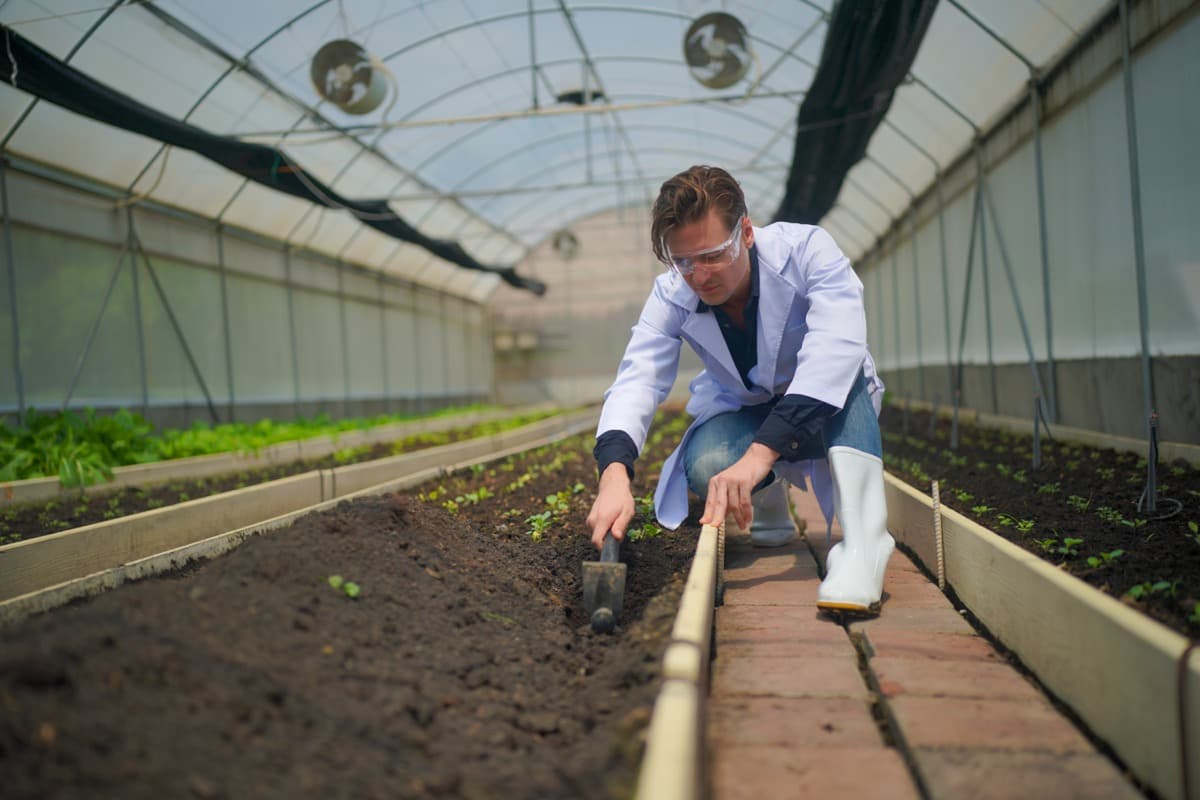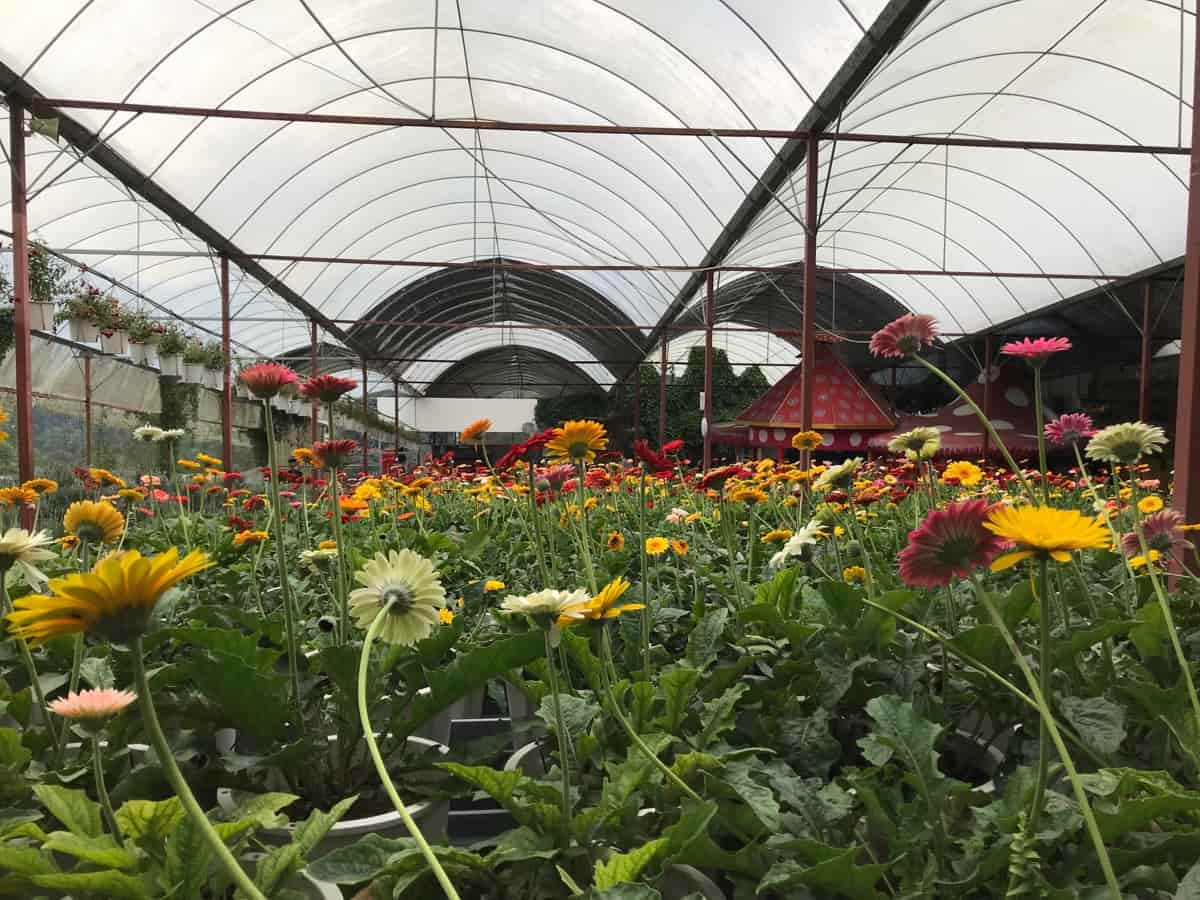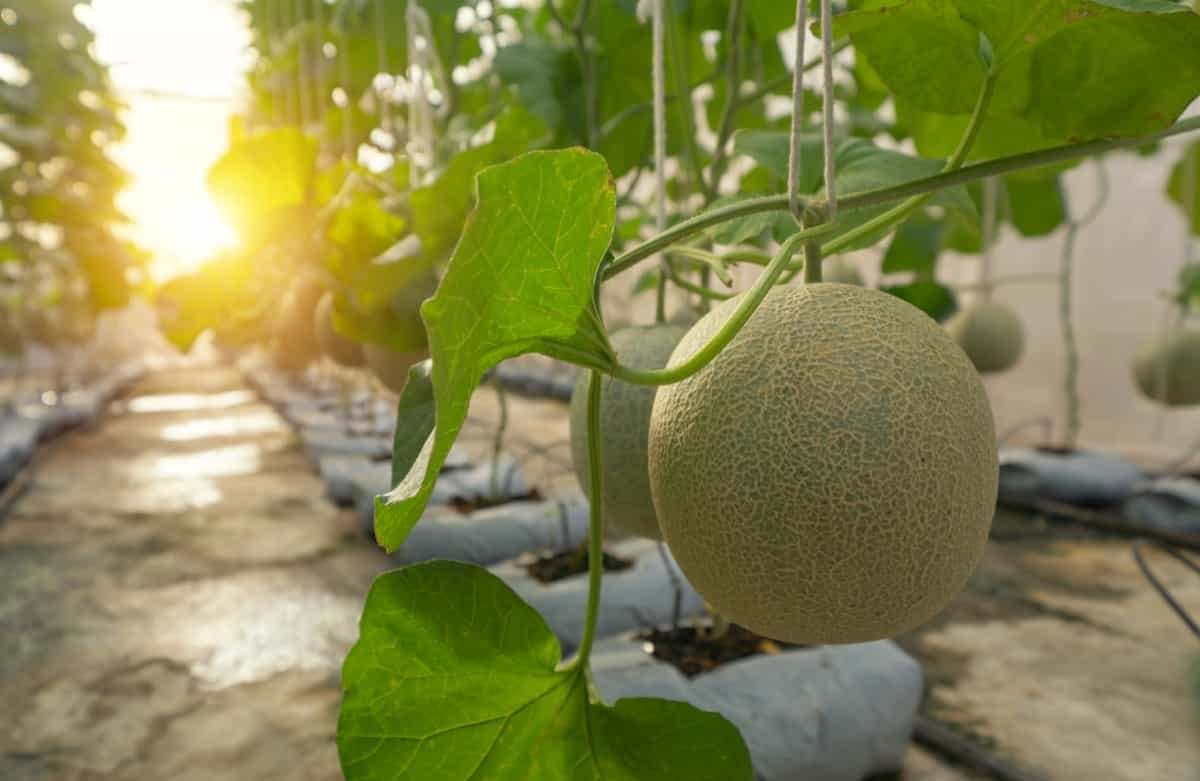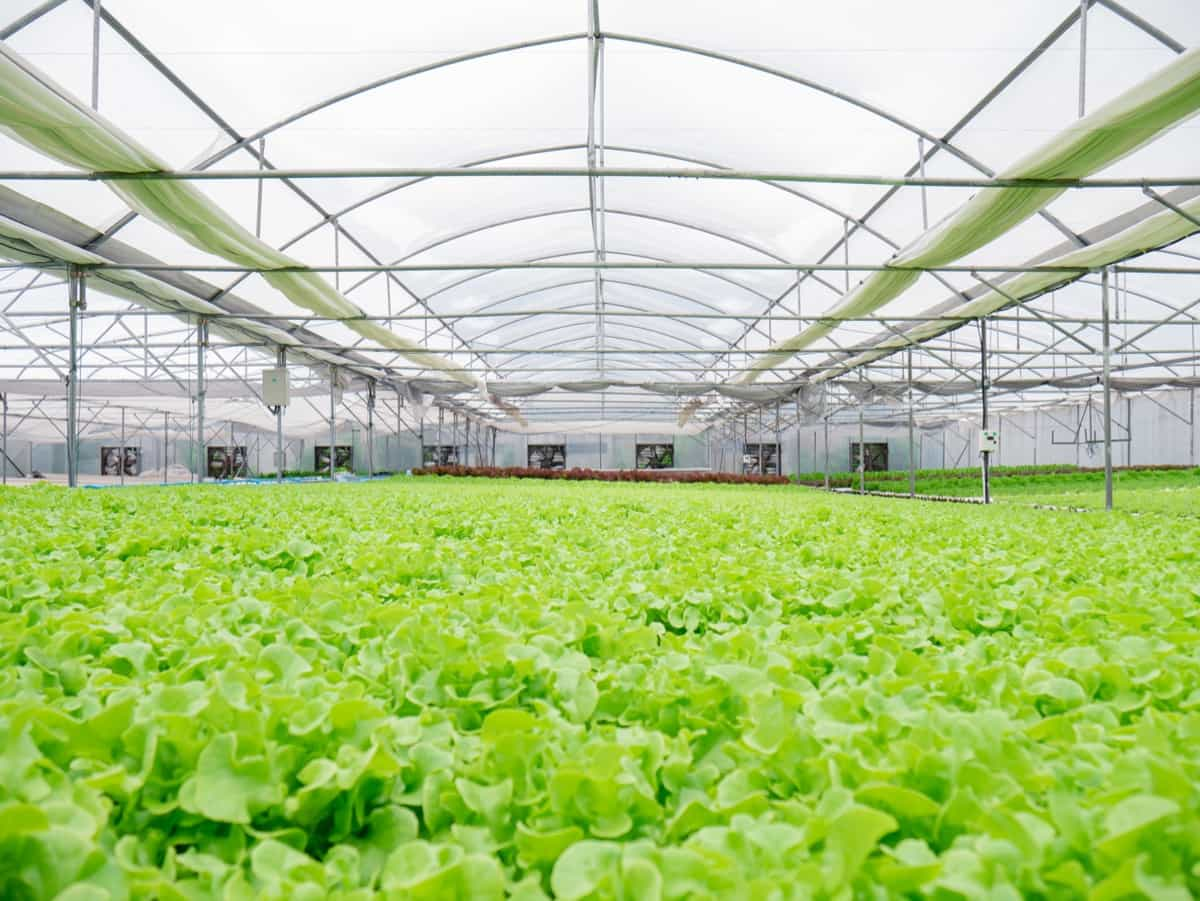Greenhouse farming is a type of agriculture that uses artificial climate control to produce crops indoors year-round. This method of agriculture is particularly suited to climates that are not naturally hospitable to agricultural production, such as locations near the equator or in cold regions. The main benefit of greenhouse farming is that it allows farmers to crop more diverse types of plants, including those that are difficult or impossible to grow outdoors.

Greenhouse Farming in Manipur
What is Greenhouse Farming?
Greenhouse farming is an agricultural process that uses glass, plastic, or other transparent materials to protect plants from the elements. The temperature inside the greenhouse is usually much higher than outside, providing a consistent temperature and plenty of sunlight for the plants.
Greenhouses are also useful for growing fruit, vegetables, and flowers in cooler climates. Greenhouse farming is a type of agriculture that uses artificial structures to help plants grow. These structures can be anything from simple glass walls to elaborate, climate-controlled chambers.
Advantages of Greenhouse Farming in Manipur
Greenhouse farming is a type of agriculture that uses artificial structures to keep the temperature above the freezing point of water. This technique is used to grow crops such as Tomatoes, Cucumbers, and Strawberries. There are many benefits to greenhouse farming in Manipur. One advantage is that it allows farmers to extend the growing season.
Greenhouse farming can also help reduce exposure to pests and diseases and increase yields. Additionally, greenhouse farming is more environmentally friendly than traditional methods of agriculture, which can reduce farm emissions. It is a sustainable way to grow crops. Greenhouse farming uses less land and water than traditional farming methods, producing food without harmful pesticides or fertilizers.
It is climate-friendly. It helps preserve the environment by reducing the amount of carbon dioxide released into the atmosphere. It is also economically viable in Manipur. The cost of products from a greenhouse farm is lower than products from a traditional farm because greenhouse farms use less energy and resources.
In case you missed it: How to Start Poultry Farming in Manipur: Business Plan, Set-up Cost, Profit, and Requirements

The crops grown in greenhouses are typically more nutritious and have higher yields than those harvested from fields. In addition, greenhouse farming helps mitigate environmental impacts, such as soil erosion and water scarcity, due to the need for less land and irrigation. Moreover, greenhouse farming offers several economic benefits, such as increased productivity and decreased input costs.
How Greenhouse Farming is Done in Manipur?
In Manipur, greenhouse farming uses plastic sheeting, bamboo poles, and ropes to support the roof. The crops are grown in four soil layers, with a light layer of concrete on top. This method helps to conserve moisture and reduces the need for irrigation. The greenhouse in Manipur is maintained at a temperature of around 28C. The plants are watered using an overhead irrigation system that delivers water directly to the roots of the plants.
Manipur is one of the most agriculturally-rich states in India. With a diverse climate and rich soils, Manipur has the potential to become a major player in greenhouses farming. In Manipur, greenhouse farming is a new emerging industry. The state has a long hot, humid tropical climate, making it ideal for growing crops in greenhouses. Greenhouse farming is a type of agriculture that involves growing crops near controlled environmental conditions.
This allows farmers to produce crops year-round without needing weather extremes, such as freezing temperatures or drought. With the added benefits of increased crop yield, reduced land use, and elimination of pesticides and other harmful chemicals, greenhouse farming has become increasingly popular in Manipur. However, establishing a greenhouse farm can be costly, so several government incentives are in place to help farmers get started.
Scope of Greenhouse Farming in Manipur
Greenhouse farming is a type of agriculture in which crops are grown in enclosed indoor facilities with controlled environmental conditions. Greenhouse farming is an increasingly popular method of producing food, and it is becoming a more important part of the global food supply. In Manipur, greenhouse farming has the potential to help improve the region’s agricultural productivity and reduce land use.
Greenhouse farming can produce various crops, including fruits and vegetables, flowers, herbs, and livestock feed. Greenhouses provide year-round growing conditions for plants, allowing farmers to extend the growing season by months or even years. This allows them to cultivate crops that could not grow outside the tropics or subtropics. The benefits of greenhouse farming are manifold. In Manipur, greenhouse farming could help improve agricultural productivity and reduce land use.
Top Places for Greenhouse Farming in Manipur
- Ukhrul district
- Imphal East
- Thoubal
- Tamenglong
In case you missed it: How to Build a Small Greenhouse from Scratch: Cheap Construction Ideas, Material Required, and Setup Cost

Is Greenhouse Farming Profitable in Manipur?
Greenhouse farming is a new technology that has grown in popularity recently due to its environmental benefits. Greenhouse farming is a type of agriculture that uses artificial sunlight and heat to produce crops inside a controlled environment. This type of farming is often more profitable than traditional farming because it requires less land, less labor, and less input costs.
Greenhouse farming is becoming increasingly popular in Manipur due to the state’s high temperatures and erratic rainfall. However, greenhouse farming is not without its challenges. Crops may not yield as much as traditional agriculture, and greenhouse costs are higher than traditional farms. Additionally, subsidies and loans are necessary for businesses hoping to adopt greenhouse farming techniques.
Can You Grow in a Greenhouse Year-Round in Manipur?
Greenhouse farming is a growing industry in Manipur, and it can be done year-round, depending on the climate. The main crops grown in greenhouses are vegetables, fruits, flowers, and ornamental plants. Greenhouse farming is a very effective way to produce crops year-round in Manipur. The state provides subsidies and loans for greenhouse farming, making the investment relatively affordable.
Crops are Grown Under Greenhouses in Manipur
- In Manipur, greenhouse farming is a popular method of producing vegetables and fruits. Greenhouse farming in Manipur uses a variety of crops, including tomatoes, cucumbers, eggplants, peppers, and apples.
- Several types of crops can be cultivated in a greenhouse in Manipur. These include Tomatoes, Potatoes, Cucumbers, Eggplant, Beans, Peas, Capsicum Peppers, Mangos, and Avocados. All these crops require a warm and humid environment for optimum growth.
- Greenhouse farming is a new and emerging technology in Manipur that uses greenhouses to protect crops from the region’s extreme weather conditions. Greenhouse farming allows farmers to produce more crops year-round, increasing income and food security.
What are The Different Types of Greenhouse Farms in Manipur?
1. Cold frame farming is the simplest type of greenhouse and is typically used for small crops such as flowers or vegetables. It consists of a wooden frame covered with plastic film or glass heated by the sun or an electric heating pad. Cold frame farming can be done on a small-scale using materials found at home, but it is more expensive than other greenhouses.
In case you missed it: Glasshouse Farming: For Increased Yields and Reduced Pesticide Use

2. Hoop house farming uses a series of hoops made from wood or metal to protect plants from the wind and rain. Hoop houses can be larger than cold frames and are often used for fruits or vegetables that need lots of exposure to sunlight. Solar greenhouses use panels filled with sunlight-absorbing materials to create an indoor environment similar to outdoor conditions.
3. Glasshouse is the most common type of greenhouse used for farming. This type of greenhouse uses transparent panels or sheets of glass to allow sunlight and air to enter the structure, preventing direct contact with the ground. This allows the plants to grow without exposure to direct sunlight.
Cost to Build a Greenhouse Farm in Manipur
In Manipur, greenhouses have been in use for a considerable time now. They are mostly used to cultivate fruits and vegetables. The cost of building a greenhouse varies depending on the size and type. However, the general cost of a greenhouse ranges from Rs. 5 lahks to Rs. 15 lahks. A subsidy is also available from the government to help offset some of the costs. Loans are also available from some financial institutions, but they come with interest rates that can be quite high.
Create a Greenhouse Business Plan in Manipur
1. To set up a greenhouse business in Manipur, you must identify the crops best suited for cultivation in a greenhouse environment and estimate the costs associated with production.
2. You will also need to find an appropriate location for your greenhouse and acquire building permits from the authorities.
3. To start a greenhouse business in Manipur, you must first research the market. Many crops can be grown in greenhouses, so deciding which ones are most relevant to your region and what consumers want is important. You will need to identify the crops that are best suited for greenhouse cultivation.
4. Many crops can be grown indoors in Manipur, including vegetables, fruits, flowers, and herbs. Selecting the right crop variety for your greenhouse is important because not all varieties will thrive in a heated environment.
5. Once you know what crops to grow and how much they will cost, you must determine your greenhouse’s size and calculate its cost. You may also be eligible for government subsidies or loans to help cover these costs.
6. Research the market potential of greenhouse agriculture in Manipur and identify the areas with the highest demand.
7. Establish cost estimates for constructing an acre-wide greenhouse facility and develop specific marketing strategies to promote the product.
8. Obtain government subsidies and loans to finance the project. Obtain loans from private banks or institutions to finance the installation of your greenhouse equipment.
In case you missed it: Ways to Use Neem Oil in Plants: Benefits in Agriculture, Application Method in Garden, and Uses in Hydroponics

9. Develop a production plan that considers seasonal changes and weather predictions. Once you have identified the necessary information, it is time to create a business plan for your greenhouse venture.
10. Implement effective marketing strategies to reach target consumers. A business plan will help you organize your ideas and track your progress as you work towards realizing your goals. It would help if you also considered seeking advice from other experts who can offer advice on building a successful greenhouse enterprise in Manipur.
Key Rules for Greenhouse Farming in Manipur
- Crops should be chosen based on their resistance to fungal and bacterial diseases.
- Acre greenhouses should be well-ventilated to avoid heat stress and promote good crop growth.
- Appropriate fertilizers, herbicides, and pesticides should be used to achieve optimal yields.
- Crops must be chosen carefully, as the climate is very diverse, and many different types of soils exist.
- Greenhouse crops can also only be grown on an acre or two at a time, so choosing the right type of greenhouse for your needs is important.
- Manipur has several subsidy programs for greenhouse farmers, depending on the selected crop. Loans can also be obtained from banks or other financial institutions.
Are There Any Loans and Subsidies Available for Greenhouse Farmers in Manipur?
There are various subsidies and grants available for greenhouse farmers in Manipur. These include the Pradhan Mantri Fasal Bima Yojana, Pradhan Mantri Krishi Sinchai Yojana, and the Deen Dayal Upadhyaya Gram Jyoti Yojana.
Greenhouse Farmers’ Support Scheme (GFS), a major subsidy scheme, has helped promote this growth. The GFS provides support worth INR 2 lakh per hectare of land area under cultivation in greenhouses, which makes it particularly attractive for farmers in remote areas. In addition, loans are available from various financial institutions to help finance greenhouse construction projects. These policies constitute an effective platform for promoting greenhouse agriculture in Manipur.
To set up a greenhouse in Manipur, farmers must first obtain a subsidy from the government. The subsidy provides financial assistance for setting up the greenhouse, including equipment and materials. In addition, loans may also be available from banks or other financial institutions. Subsidies can help cover the costs of land, construction materials, and equipment. Loans can help cover startup costs such as employee salaries and marketing expenses.
Challenges of Greenhouse Farming in Manipur
One challenge is that greenhouse farming requires a lot of land, which is not always available in Manipur. Another challenge is that greenhouse farming costs more than traditional farming methods, and therefore, subsidies and loans may be necessary to make it affordable for farmers.
Despite these challenges, there are indications that greenhouse farming could be a successful strategy in Manipur. By learning how to overcome the barriers to entry posed by cost and access to resources, greenhouse farmers may be able to tap into the growing market for sustainable products in India.
In case you missed it: How to Start Shrimp Farming in Mexico: Key Rules, Requirements, Business Plan, Setup Cost, Subsidy, and Loans

Conclusion
Greenhouse farming is a growing trend in Manipur as people search for more sustainable and productive crop production methods. Greenhouses can help farmers to increase the yield of their crops, and they also save energy by using less sunlight. Greenhouse farming in Manipur has grown in popularity over the past few years, mostly due to its many benefits. These benefits include increased yields, reduced costs, and easier loan access.
- How to Build a Low-budget Goat Shed: Cheap Ideas and Tips
- Goat Farming Training Programs in India: A Beginner’s Guide
- Types of Pesticides Used in Agriculture: A Beginner’s Guide
- Economical Aquaculture: A Guide to Low-Budget Fish Farming
- 15 Common Planting Errors That Can Doom Your Fruit Trees
- How to Make Houseplants Bushy: Effective Tips and Ideas
- Innovative Strategies for Boosting Coconut Pollination and Yield
- Pollination Strategies for Maximum Pumpkin Yield
- The Complete Guide to Chicken Fattening: Strategies for Maximum Growth
- Natural Solutions for Tulip Problems: 100% Effective Remedies for Leaf and Bulb-Related Issues
- Revolutionizing Citrus Preservation: Towards a Healthier, Greener Future
- Natural Solutions for Peony Leaf and Flower Problems: 100% Effective Remedies
- Maximizing Profits with Avocado Contract Farming in India: A Comprehensive Guide
- Natural Solutions for Hydrangea Problems: 100% Effective Remedies for Leaf and Flowers
- The Ultimate Guide to Choosing the Perfect Foliage Friend: Bringing Life Indoors
- From Sunlight to Sustainability: 15 Ways to Use Solar Technology in Agriculture
- The Ultimate Guide to Dong Tao Chicken: Exploring from History to Raising
- The Eco-Friendly Makeover: How to Convert Your Unused Swimming Pool into a Fish Pond
- Mastering the Art of Delaware Chicken Farming: Essentials for Healthy Backyard Flocks
- 20 Best Homemade Fertilizers for Money Plant: DIY Recipes and Application Methods
- How to Craft a Comprehensive Free-Range Chicken Farming Business Plan
- Brighten Your Flock: Raising Easter Egger Chickens for Beauty and Bounty
- How to Optimize Your Poultry Egg Farm Business Plan with These Strategies
- Subsidy for Spirulina Cultivation: How Indian Government Schemes Encouraging Spirulina Farmers
- Ultimate Guide to Raising Dominique Chickens: Breeding, Feeding, Egg-Production, and Care
- Mastering the Art of Raising Jersey Giant Chickens: Care, Feeding, and More
- Ultimate Guide to Raising Legbar Chickens: Breeding, Farming Practices, Diet, Egg-Production
- How to Raise Welsummer Chickens: A Comprehensive Guide for Beginners
- How to Protect Indoor Plants in Winter: A Comprehensive Guide
- Ultimate Guide to Grow Bag Gardening: Tips, Tricks, and Planting Ideas for Urban Gardeners
- Guide to Lotus Cultivation: How to Propagate, Plant, Grow, Care, Cost, and Profit
- Agriculture Drone Subsidy Scheme: Government Kisan Subsidy, License, and How to Apply Online
- Ultimate Guide to Raising Araucana Chickens: Breed Profile, Farming Economics, Diet, and Care
- Bringing Hydroponics to Classroom: Importance, Benefits of Learning for School Students
- Ultimate Guide to Raising Polish Chickens: Breed Profile, Farming Economics, Diet, and Care
- Ultimate Guide to Raising Australorp Chickens: Profile, Farming Economics, Egg Production, Diet, and Care